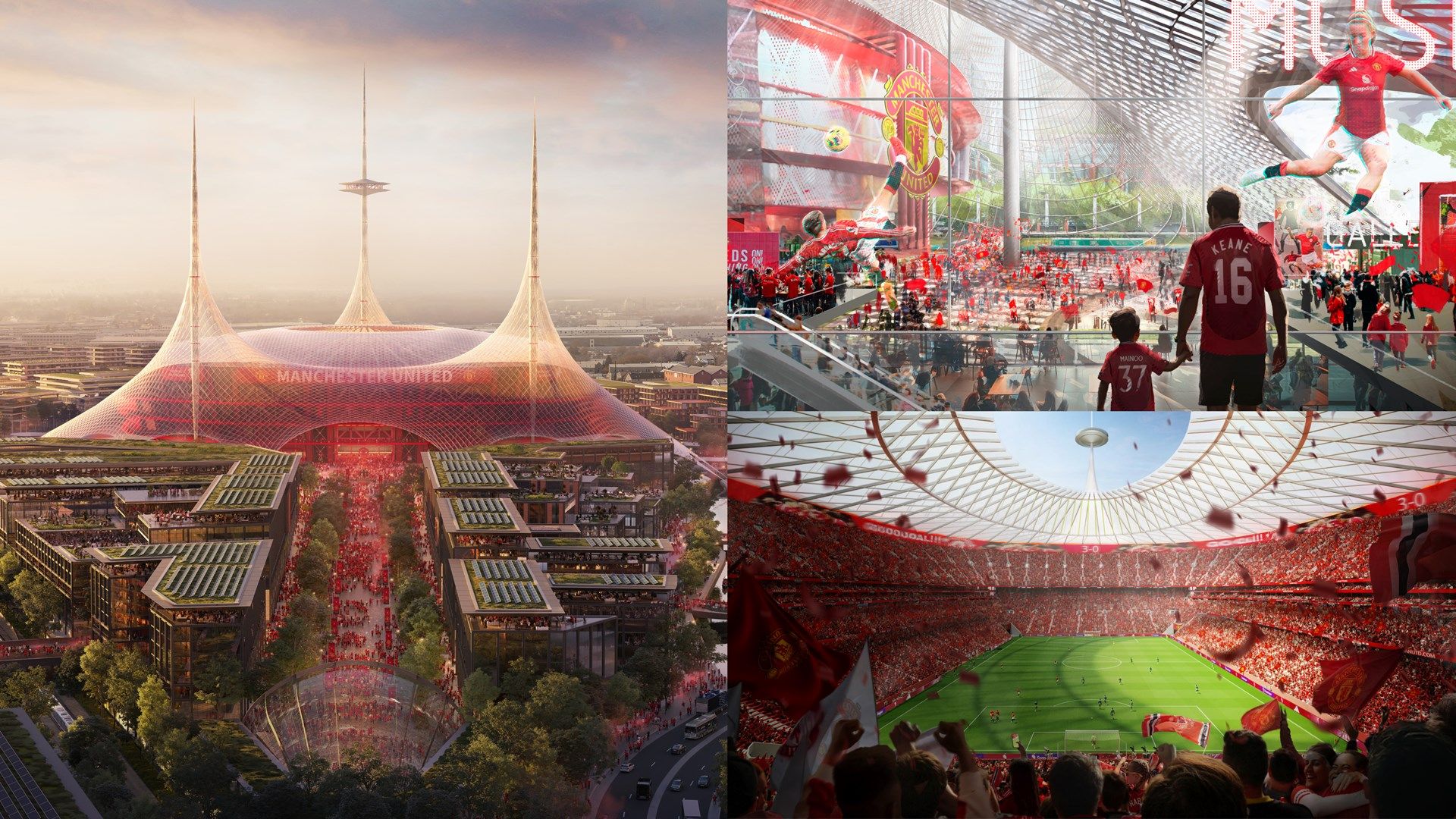Man Utd Stadium Vision Eyes 2035 World Cup Final
Manchester United stadium plans have taken a dramatic step forward as the club maps out a £2 billion, 100,000-seat arena that it hopes will stage the Women’s World Cup final in 2035.
Manchester United stadium project: the ‘Wembley of the North’
Co-owner Sir Jim Ratcliffe unveiled the concept in March, branding it an “iconic home” that can rival Wembley for prestige and match-day experience. The new build is slated to rise on land adjacent to Old Trafford before eventually replacing the 1910 landmark. Club architects envisage sweeping single-tier stands, cutting-edge acoustics, and sustainable technologies that slash the venue’s carbon footprint.
Timeline and construction milestones
United insiders maintain that groundwork could begin as early as 2026 once planning permission, environmental assessments, and transport upgrades are rubber-stamped. The target completion window is five to six years, which—if achieved—would see the Manchester United stadium opening its doors well before the Women’s World Cup 2035 kicks off. Project leaders point to Tottenham Hotspur’s 62,850-seat stadium, finished in under three years, as proof that modern modular techniques can compress schedules without compromising quality.
Funding the £2 billion vision
While final financing remains fluid, discussions are centred on a blended model: fresh equity from Ratcliffe’s INEOS, naming-rights partnerships with global tech and finance brands, and long-term bonds similar to those used at SoFi Stadium in Los Angeles. United are simultaneously negotiating the refinancing of existing debt, aiming to ring-fence match-day revenues for construction costs rather than repayments.
Why the Women’s World Cup 2035 matters
The UK is currently the lone formal bidder for the 2035 tournament, and the Football Association has flagged a northern showpiece final as a legacy pillar. A Manchester United stadium seating 100,000 would dwarf all current WSL grounds and provide UEFA-compliant media, hospitality, and VAR facilities. Hosting the final would also underscore Ratcliffe’s public commitment to elevating the women’s game—United Women have averaged close to 10,000 fans at Old Trafford fixtures but could see that figure quadruple in a purpose-built arena.
Boost for the local economy
Greater Manchester’s Combined Authority projects that a Women’s World Cup final could inject more than £300 million into the regional economy, thanks to tourism, hospitality, and international broadcast exposure. The club’s blueprint includes expanded rail links at Trafford Park and a pedestrian boulevard connecting the stadium to MediaCityUK, turning match day into a city-wide festival.
Impact on Old Trafford heritage
Traditionalists fear losing the ghosts of Cantona, Best, and Rooney when bulldozers move in, yet United plan to weave club history into the new build. Architects have earmarked a ‘Red Way’ museum corridor that will house the original 1910 turnstiles, the Stretford End sign, and a reconstructed section of the old players’ tunnel. Season-ticket holders will be invited to sign bricks that form part of a memorial wall, ensuring continuity between eras.
Benefits for United Women and the academy
Beyond marquee events, the stadium complex will house a 5,000-seat secondary pitch for United Women’s regular WSL fixtures, plus indoor training barns for academy teams. The aim is to embed the women’s and men’s programmes in one integrated campus, mirroring setups at clubs like Barcelona and Lyon.
Potential obstacles and risk management
Club officials acknowledge that large-scale infrastructure projects rarely hit preliminary deadlines. Brexit-related supply-chain issues, inflation in steel and concrete prices, and potential legal challenges from residents could extend the timeline. United have commissioned an independent oversight board chaired by former Olympic Delivery Authority executives to flag bottlenecks early and keep the Manchester United stadium endeavour on track.
Ecological footprint and community outreach
Sustainability sits at the core of the design. Plans call for a solar-panel roof skin, rainwater harvesting for pitch irrigation, and a zero-single-use-plastic policy in all concourses. United will also launch a ‘Stretford Skills Hub,’ offering apprenticeships in carpentry, electrics, and digital broadcast production to local youth during the build, creating a human legacy alongside bricks and mortar.
How the new arena reshapes United’s competitive future
Modern hospitality lounges and premium suites are projected to lift annual match-day revenue from £110 million to over £200 million, funds that could be reinvested into transfer budgets and youth development. The acoustics-optimised Stretford End is expected to enhance home advantage, while an NFL-standard artificial-hybrid pitch will broaden year-round event scheduling.
Statements from inside Old Trafford
Speaking to BBC Sport, a senior club source reiterated confidence: “We anticipate the new stadium opening well before 2035. Sir Jim’s timeframe remains realistic, but we’re candid about the complexity—no corners will be cut.” The same source stressed that during construction United will remain at Old Trafford, with phased demolition beginning only after the new venue is fully operational, ensuring zero displacement of home fixtures.
Opinion: a bold gamble worth taking
Knocking down football’s Theatre of Dreams is undeniably a wrench, yet progress often walks hand-in-hand with difficult farewells. If the Manchester United stadium vision delivers a greener, louder, and more inclusive home that stages a Women’s World Cup final, the sacrifice will feel justified. Tradition, after all, is best honoured not by freezing time, but by ensuring the next generation enjoys nights they’ll recount for decades.
Your global gateway to nonstop football coverage:
Goal Sports News
Share this content:
